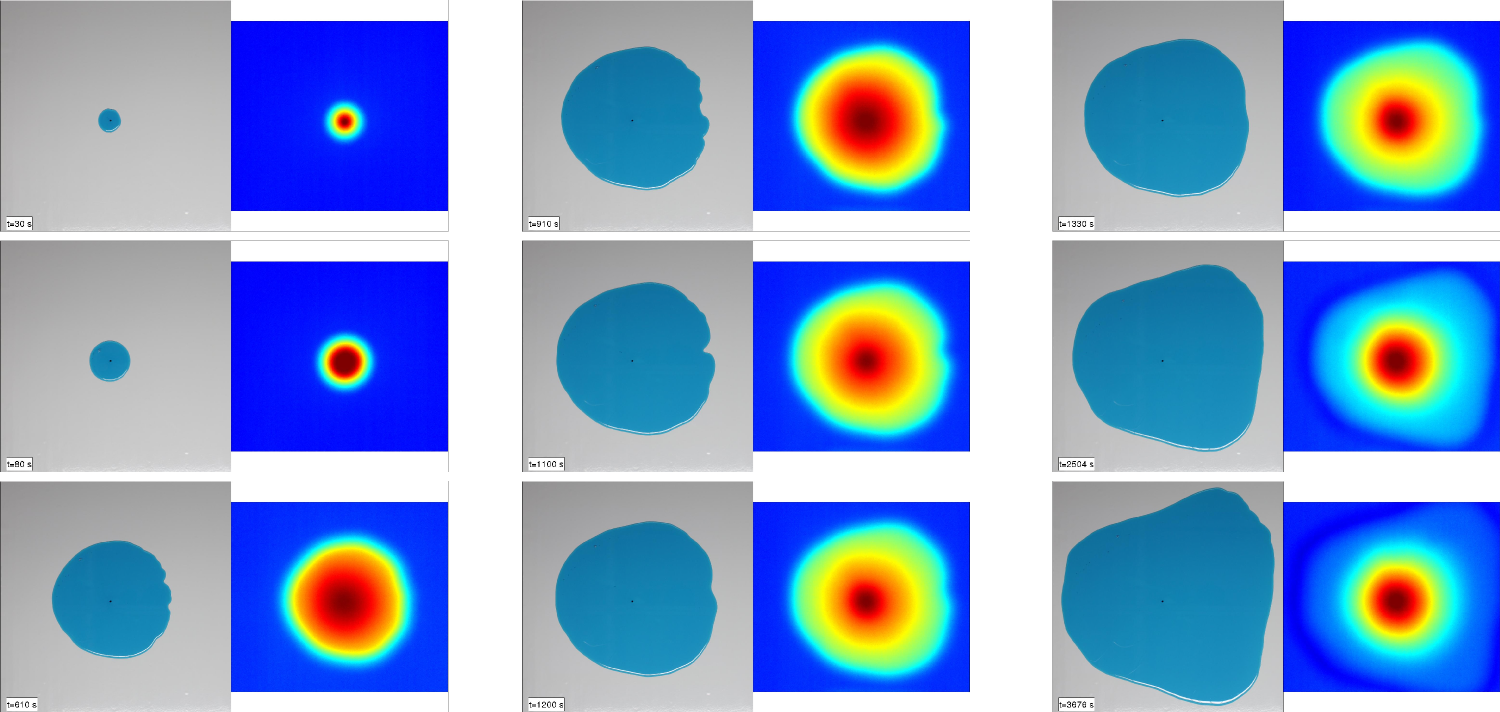
Dynamics and cooling of lava flows
My PhD thesis focused on the cooling of lava flows, through a simple theoretical model and analogue experiments.- An issue in operational volcanology is the possibility to predict lava flow advance using remote-sensed thermal images.
- This problem involves a study of the physical coupling between the spreading and the cooling of a lava flow, to understand how the thermal heat flux can be used to assess the effusion rate, and how the effusion rate controls the advance of a flow with a complex rheology.
The issue is to understand the temporal evolution of the surface thermal signal of a flow depending on its input rate and rheology.
We first study the evolution of an axisymmetric horizontal viscous gravity current (silicone oil), injected with a constant supply rate at a hot temperature and cooling while spreading into the air. The images below display the visible photograph (top) and the thermal IR image (bottom) taken during on experiment.
The surface thermal signature of the current becomes constant after a certain time. Scaling this simple model for basaltic lava flows, we obtain that the effusion rate could be retrieved from one single thermal survey after a few days. See the 2010 AGU poster presentation and the published article for further details.
I then studied the deviation from this ideal newtonian behaviour using PEG wax undergoing solidification away from the source. We observe periodic overflowing of the liquid wax over the solidified material, associated with renewed surface thermal signals (see the 2011 AGU poster).
I also focus on the inertia of the surface thermal signal compare to instanteous change in the supply rates. The images below present the evolution of hot glucose syrup (temperature-dependent viscosity) injected where the supply rate is divided by three in the middle of the experiment (top to bottom, left column to right column).
